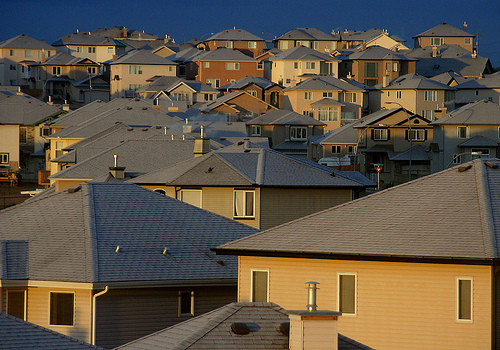
Lots of people still live here.
We reported last week that many large American cities are growing at a faster rate than their suburbs, according to new Census Bureau figures. “If the numbers hold up,” wrote Greg Hanscom, “they represent a dramatic shift … that fits nicely into our favorite narrative about cities rising from rust while suburbs languish in big-box obsolescence.”
Unfortunately, upon closer inspection, the numbers aren’t quite so encouraging.
Brad Plumer at The Washington Post‘s Wonkblog points out the problem: “Urban cores are still much, much smaller than the suburbs. Which means they can show higher growth rates even if they’re adding far fewer people in absolute terms.”
Plumer cites a post from David King, a professor of urban planning at Columbia University:
Consider Atlanta … Atlanta has 432,427 people as of July 2011 and grew at 2.4%. The suburbs have 4,926,778 in July 2011 and grew at 1.3%. Here is the data source. This means that the metro growth was 73,361 for the year, 10,135 settled in Atlanta and 63,226 settled in the suburbs. In percentage terms, 14% of the growth happened in the central city and 86% happened in the suburbs. That doesn’t suggest a sea change in attitude. …
There are also large variations by region of the country and metropolitan area, and there does not seem to be any obvious and coherent trend. …
I’m happy that many cities are doing well and growing. I hope the trend (if there is one) continues and expands. I’m just not sure there is any evidence of a broad trend yet.
Still, writes Kaid Benfield at NRDC’s Switchboard blog, “between 1980 and the mid-1990s, suburban population had grown a staggering ten times faster than central-city population in our largest metro areas.” So if growth rates in cities have rebounded — even if growth in absolute numbers still lags — that is progress.
Yes, the suburbs are winning, but city centers are starting to catch up.



